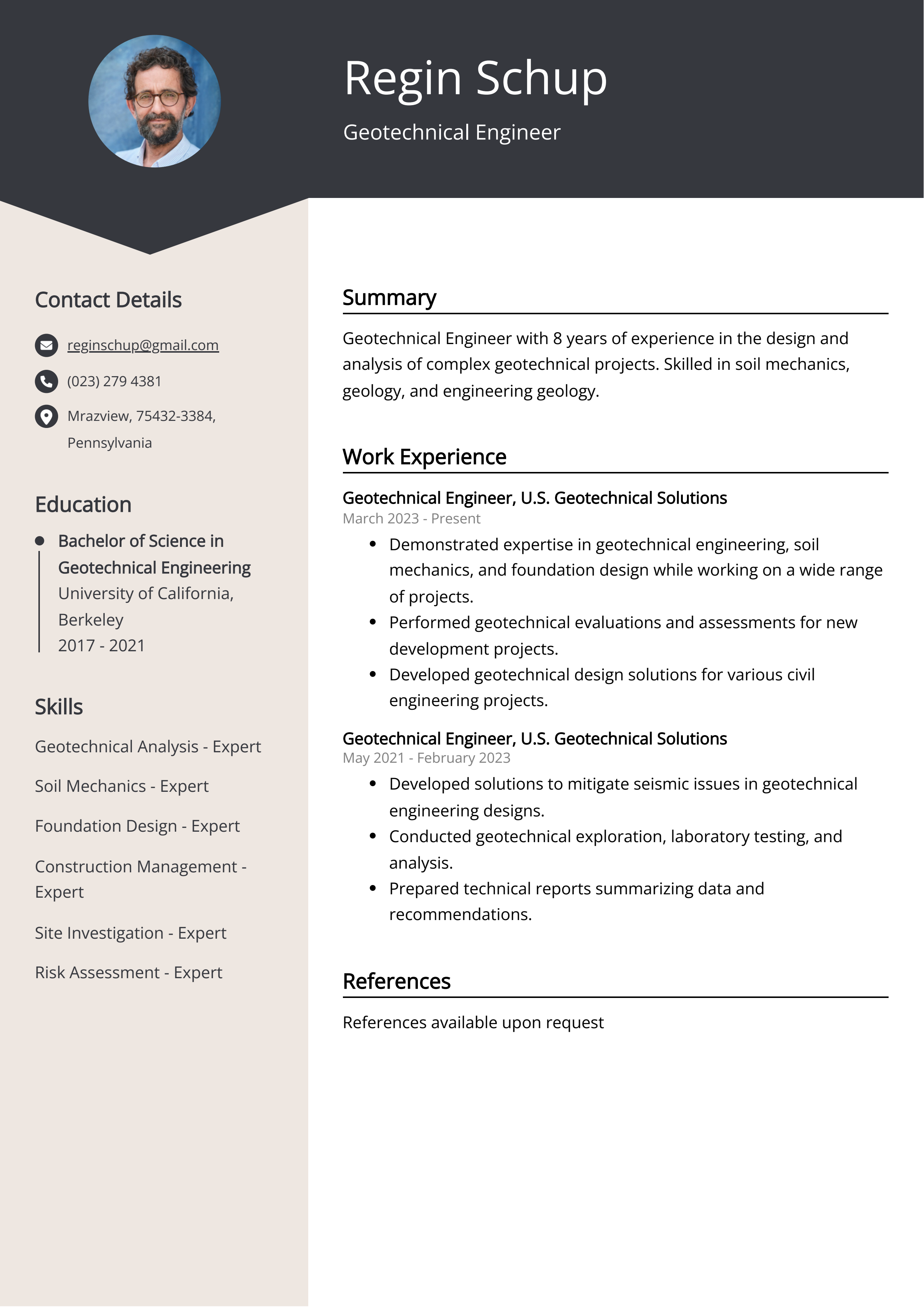Getting My Geotheta To Work
Getting My Geotheta To Work
Blog Article
The Ultimate Guide To Geotheta
Table of ContentsGeotheta - Truths6 Easy Facts About Geotheta DescribedGeotheta Can Be Fun For AnyoneNot known Factual Statements About Geotheta Some Known Questions About Geotheta.

They perform website examinations, collect samples, carry out research laboratory examinations, and assess information to evaluate the suitability of the ground for building jobs - Engineer of Record. Based on their searchings for, geotechnical engineers offer referrals for foundation layout, incline stability, maintaining frameworks, and mitigation of geotechnical hazards. They work together with various other professionals, such as architects, architectural designers, and construction teams, to guarantee that geotechnical considerations are incorporated right into the total job design and execution
By assessing the behavior and buildings of dirt and rock, they can determine prospective geotechnical risks such as landslides, soil settlement, or incline instability. Their competence assists protect against failings or mishaps that could endanger lives and residential property. Right here are some in-depth tasks and obligations of a geotechnical engineer: Website Examination: Geotechnical engineers conduct site examinations to collect data on subsurface problems.
They analyze the information to recognize the properties and behavior of the dirt and rock, including their strength, leaks in the structure, compaction features, and groundwater conditions. Geotechnical Analysis and Design: Geotechnical designers examine the data gathered during website investigations to analyze the security and suitability of the site for building and construction projects. They do geotechnical computations and modeling to assess variables such as bearing capability, settlement, slope stability, side planet pressures, and groundwater flow.
The 7-Minute Rule for Geotheta
Foundation Design: Geotechnical designers play a critical duty in making foundations that can securely sustain the desired framework. They evaluate the dirt conditions and tons needs to figure out the appropriate foundation kind, such as superficial structures (e.g., grounds), deep structures (e.g (https://www.4shared.com/u/w_sNL5Rc/ianhammond2191.html)., piles), or specialized strategies like soil enhancement. They take into consideration variables such as settlement restrictions, birthing ability, and soil-structure communication to develop ideal foundation designs
They examine construction strategies, screen website activities, and conduct field evaluations to validate that the design referrals are complied with. If unpredicted geotechnical issues occur, they evaluate the situation and provide suggestions for remediation or modifications to the layout. Threat Assessment and Reduction: Geotechnical engineers examine geotechnical risks and dangers connected with the job website, such as landslides, liquefaction, or soil disintegration.

Collaboration and Communication: Geotechnical designers work very closely with other professionals associated with a project, such as designers, structural designers, and building and construction teams. Reliable interaction and partnership are vital to integrate geotechnical factors to consider into the overall project layout and building process. Geotechnical engineers provide technical know-how, answer questions, and make sure that geotechnical needs are met.
The Single Strategy To Use For Geotheta
Below are some kinds of geotechnical engineers: Foundation Designer: Structure designers specialize in developing and assessing foundations for structures. They examine the dirt conditions, load requirements, and site attributes to figure out one of the most suitable foundation type and design, such as superficial foundations, deep structures, or specialized techniques like pile structures.
They examine the aspects affecting incline security, such as soil homes, groundwater conditions, and slope geometry, and establish techniques to avoid incline failings and mitigate dangers. Quake Designer: Quake designers specialize in assessing and creating frameworks to hold up against seismic pressures. They analyze the seismic threat of a site, evaluate dirt liquefaction capacity, and develop seismic design standards to make sure the security and durability of structures during quakes.
They perform area testing, gather examples, and assess the collected data to identify the dirt residential properties, geologic formations, and groundwater conditions at a website. Geotechnical Instrumentation Engineer: Geotechnical instrumentation designers concentrate on monitoring and measuring the behavior of soil, rock, and structures. They mount and preserve instrumentation systems that monitor factors such as dirt settlement, groundwater degrees, incline motions, and structural variations to analyze performance and provide early cautions of prospective concerns.
Examine This Report about Geotheta
They perform tests such as triaxial examinations, combination examinations, direct shear tests, and leaks in the structure tests to collect information for geotechnical analysis and layout. Geosynthetics Engineer: Geosynthetics engineers concentrate on the design and application of geosynthetic materials, such as geotextiles, geogrids, and geomembranes. They make use of these products to improve soil stability, enhance slopes, supply water drainage services, and control disintegration.
They have a tendency to be investigative individuals, which indicates they're intellectual, introspective, and investigative. They are curious, systematic, reasonable, logical, and sensible. Some of them are also social, meaning they're kind, generous, cooperative, individual, caring, useful, empathetic, sensible, and pleasant - Engineer of Record.
In the workplace setting, geotechnical engineers utilize specialized software devices to perform calculations, create layouts, and examine information. They prepare records, evaluation job specs, interact with customers and team members, and see here coordinate task tasks. The workplace setup offers a conducive setting for research, evaluation, and partnership with other specialists included in the project.
The 3-Minute Rule for Geotheta
They frequently check out job websites to conduct site examinations, assess geotechnical problems, and gather information for evaluation. These sees involve traveling to various locations, often in remote or challenging terrains. Geotechnical designers might carry out dirt tasting, conduct tests, and screen construction tasks to make certain that the geotechnical elements of the project are being executed appropriately.
Geotechnical designers additionally operate in specialized geotechnical labs. In these centers, they conduct experiments, do tests on soil and rock examples, and examine the design properties of the materials. Geotechnical laboratory engineers function thoroughly in these environments, taking care of testing equipment, operating instruments, and tape-recording information. They team up with various other lab team to ensure accurate and trusted screening outcomes.
Report this page